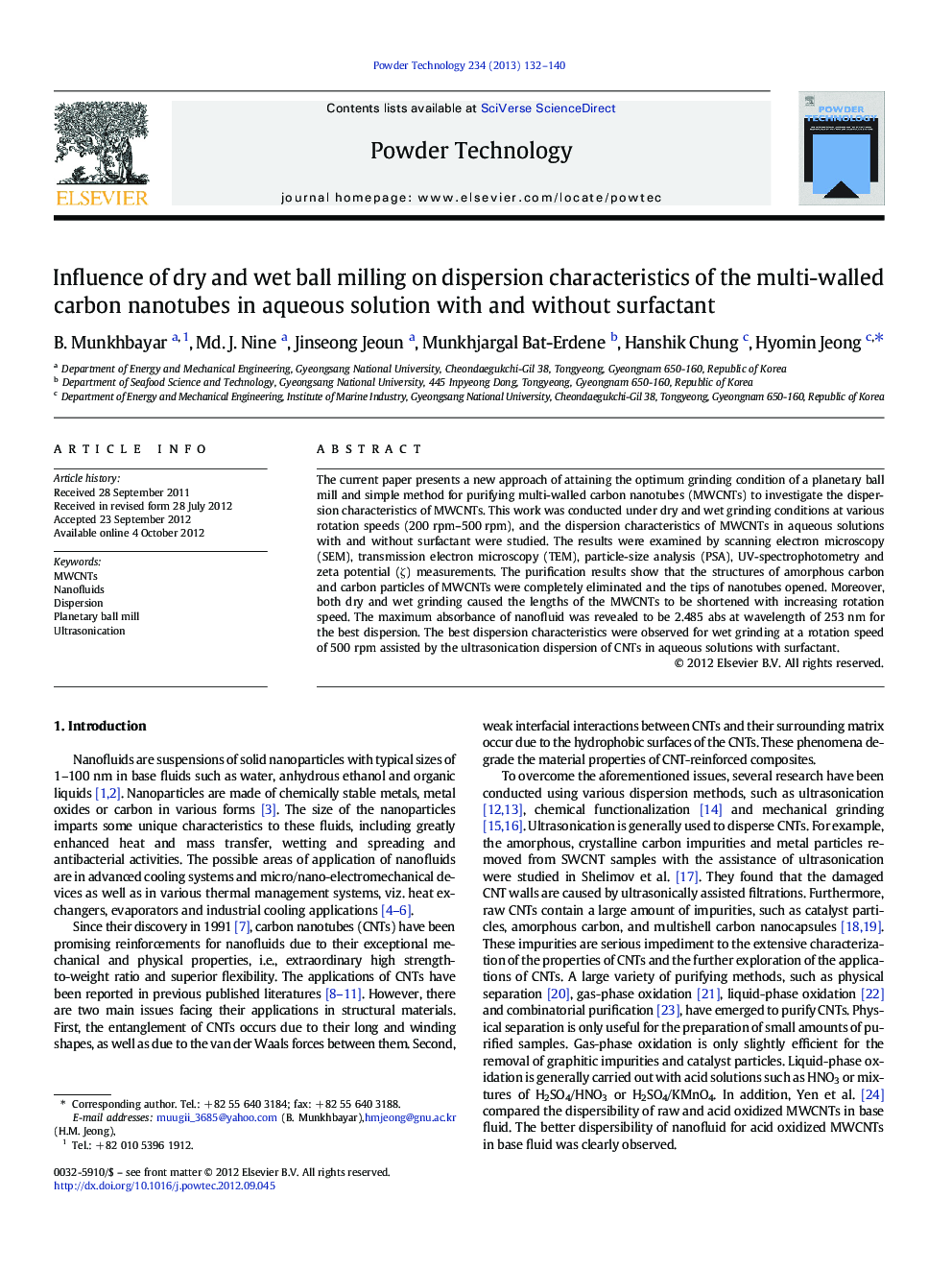| Article ID | Journal | Published Year | Pages | File Type |
|---|---|---|---|---|
| 236905 | Powder Technology | 2013 | 9 Pages |
The current paper presents a new approach of attaining the optimum grinding condition of a planetary ball mill and simple method for purifying multi-walled carbon nanotubes (MWCNTs) to investigate the dispersion characteristics of MWCNTs. This work was conducted under dry and wet grinding conditions at various rotation speeds (200 rpm–500 rpm), and the dispersion characteristics of MWCNTs in aqueous solutions with and without surfactant were studied. The results were examined by scanning electron microscopy (SEM), transmission electron microscopy (TEM), particle-size analysis (PSA), UV-spectrophotometry and zeta potential (ζ) measurements. The purification results show that the structures of amorphous carbon and carbon particles of MWCNTs were completely eliminated and the tips of nanotubes opened. Moreover, both dry and wet grinding caused the lengths of the MWCNTs to be shortened with increasing rotation speed. The maximum absorbance of nanofluid was revealed to be 2.485 abs at wavelength of 253 nm for the best dispersion. The best dispersion characteristics were observed for wet grinding at a rotation speed of 500 rpm assisted by the ultrasonication dispersion of CNTs in aqueous solutions with surfactant.
Graphical abstractThe grinding effects of the planetary-ball milling of MWCNTs with changing rotation speeds were investigated to improve the dispersibilities of MWCNTs in aqueous solutions. The best dispersion characteristics were observed for wet grinding at a rotation speed of 500 rpm assisted by the ultrasonication dispersion of CNTs in aqueous solutions with surfactant.Figure optionsDownload full-size imageDownload as PowerPoint slideHighlights► Dry and wet ball milling approaches are compared on dispersibility of CNT nanofluid. ► Grinding is effective method for reducing the agglomerated particle size of CNTs. ► SDS molecule can exert an “unzippering force” to disperse CNTs in base fluid. ► Best dispersibility of nanofluid is obtained for purified and wet ground MWCNTs.
